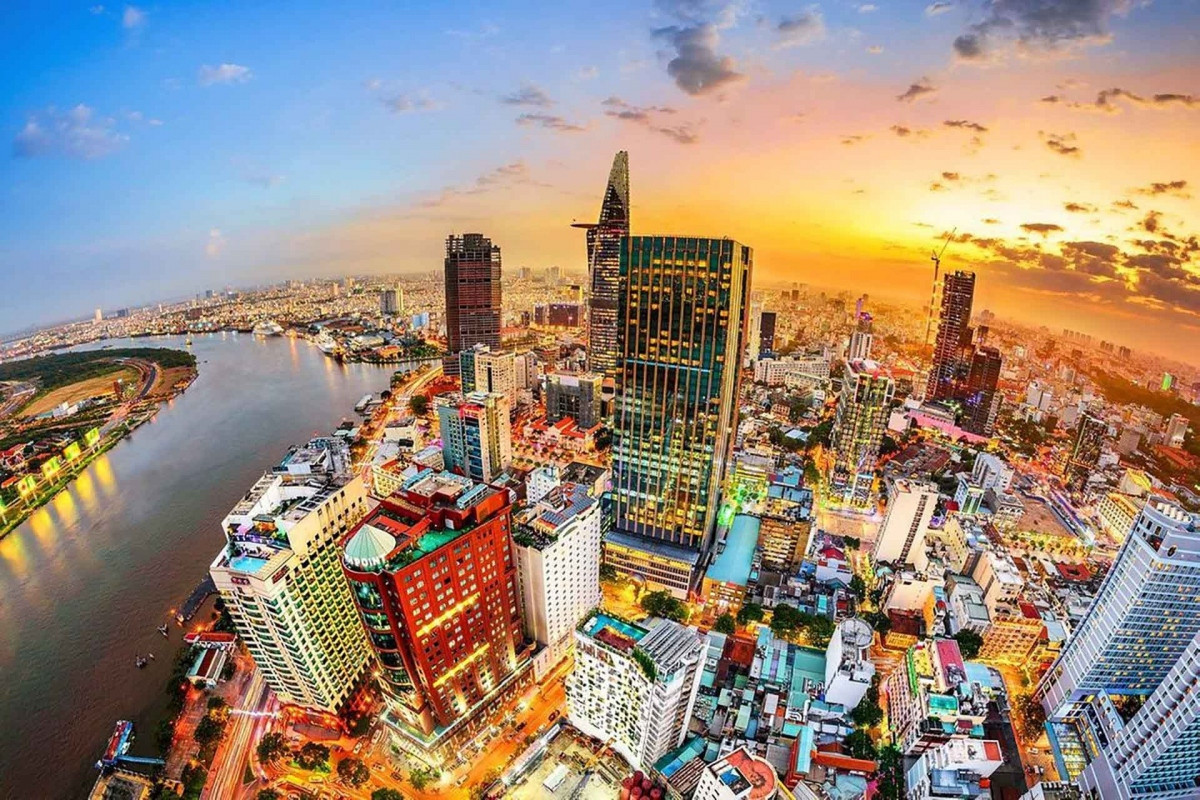Total number of posts 463.
 Deputy Prime Minister Le Van Thanh has just signed Resolution No. 138/NQ-CP dated October 25, 2022, on the National Master Plan for the period 2021 - 2030, with a vision to 2050.
Deputy Prime Minister Le Van Thanh has just signed Resolution No. 138/NQ-CP dated October 25, 2022, on the National Master Plan for the period 2021 - 2030, with a vision to 2050.
Specifically, the Government decided to approve the National Master Plan for the period of 2021 - 2030 with a vision to 2050 for submission to the National Assembly for consideration and decision.
The Ministry of Planning and Investment received opinions from the Politburo and the Party Central Committee at the 6th plenum of the 13th Central Committee on the National Master Plan Orientation and the main contents decided in Article 1 of the Government to complete. improve the dossier of the national master plan for the period of 2021 - 2030, with a vision to 2050 in accordance with the law on planning to submit to the National Assembly for consideration and decision.
The Ministry of Planning and Investment shall report to the Prime Minister on the completion of the national master plan dossier for the period 2021-2030, with a vision to 2050 before the Minister of Planning and Investment authorized the Prime Minister. On behalf of the Government, sign the report to the National Assembly for consideration and decision in accordance with the law.
Strive to be a developing country with modern industry and high middle income by 2030
According to the content of the National Master Plan for the period of 2021 - 2030, with a vision to 2050, striving by 2030 to be a developing country with modern industry, high middle income; an efficient, unified and sustainable spatial organization model for national development, forming dynamic regions, economic centers, and urban centers, with a synchronous and modern basic infrastructure network; maintaining major balances, improving the resilience of the economy; ensure energy security, food security, and water source security; the ecological environment is protected, adapting to climate change; the people's material and spiritual life is enhanced; national defense and security are guaranteed.
Striving for the average growth rate of gross domestic product (GDP) of the whole country to reach about 7.0%/year in the period of 2021 - 2030, of which the Southeast region and the Red River Delta region will increase by 8 - 8. 5 years. By 2030, GDP per capita at current prices will reach about 7,500 USD. The proportion of GDP of the service sector is over 50%, the industry-construction sector is over 40%, and the agriculture, forestry, and fishery sector is less than 10%. The contribution of total factor productivity (TFP) to growth reached 50%.
To bring into play the advantages of each socio-economic region; forming two dynamic zones north and south associated with two growth poles, Hanoi and Ho Chi Minh City, the North-South economic corridor, and the Lao Cai - Hanoi - Hai Phong economic corridors. - Quang Ninh, Moc Bai - Ho Chi Minh City - Vung Tau with synchronous and modern infrastructure with a high growth rate, making great contributions to the overall development of the country.
To basically form a national urban network, ensuring high connectivity between the national central urban area and regional urban centers and rural areas; the urbanization rate is over 50%.
Implementing national digital transformation, developing digital government, digital economy, and digital society; The share of the digital economy is about 30% of GDP.
The population size by 2030 will reach about 105 million people
The Vietnam population size by 2030 will reach about 105 million people. The Human Development Index (HDI) remained above 0.7. The average life expectancy is 75 years, of which the healthy life expectancy is at least 68 years. The average residential floor area per capita in urban areas is at least 32 m2.
To develop Vietnamese education to an advanced level in the region; among the top 10 countries with the best higher education systems in Asia. The ratio of university students is 260 per ten thousand people. The rate of trained workers with degrees and certificates is 35-40%.
Improve the quality of health services on par with advanced countries in the region. Develop a national network of medical facilities to meet the requirements of caring for, protecting and improving the health of the entire population, towards the goal of equity, quality, efficiency, and international integration. By 2030, to reach 35 hospital beds and 19 doctors per 10,000 people; the private hospital bed rate reaches 15%.
By 2050, become a developed, high-income country
Vision to 2050 to become a developed, high-income, just, democratic and civilized society. Modern and synchronous infrastructure system. Areas of harmonious and sustainable development, effectively exploiting potentials and strengths.
A smart urban system with a modern, rich, and green identity. Preserve the cultural identity and promote the good values of the nation. Good-quality environment, a harmonious society with nature, effective development towards the circular economy, and a green economy with a low carbon index.
In the period 2031 - 2050, strive for a GDP growth rate of about 6.5-7.5%/year. GDP per capita at current prices by 2050 will reach about 27,000 - 32,000 USD. The rate of urbanization by 2050 will reach 70-75%. The human development index is high, people's life is happy; national defense and security are firmly guaranteed.
4 key tasks and national development breakthroughs
According to the Resolution, there are four key tasks and breakthroughs for national development, including:
1- Forming a basic framework of national infrastructure, focusing on transport infrastructure, energy, urban areas, digital infrastructure, environmental protection, irrigation, disaster prevention, adaptation to climate change, and cultural & social infrastructure.
2- Accelerate economic restructuring and development space, ensuring productivity, quality, and efficiency improvement. Prioritize the development of a number of industries and fields that have potential and advantages and have great room to serve as a driving force for growth and improve the autonomy of the economy.
3- To develop important national growth dynamics and poles to form locomotives to attract national development. Select a number of locations, urban areas, and regions with special advantages to build (i) economic & financial centers, and (ii) special administrative-economic units that have specific institutions, mechanisms, and policies, with innovation and high international competitiveness. At the same time, have appropriate mechanisms and policies to develop deep-lying, remote, border, and island areas to contribute to political stability and maintain national defense and security.
4- Forming and developing economic corridors along the North-South and East-West axis connecting seaports, airports, international border gates, major trading hubs, urban centers, and economic centers. , growth pole. To develop industrial-urban-service belts in dynamic regions and large urban areas.
Organize development space by 06 zones
The resolution clearly states that the development space is organized into six zones as follows:
1- Northern midland and mountainous region, including 14 provinces: Ha Giang, Cao Bang, Lang Son, Bac Giang, Phu Tho, Thai Nguyen, Bac Kan, Tuyen Quang, Lao Cai, Yen Bai, Lai Chau, Son La, Dien Bien, and Hoa Binh. The northern midland and mountainous region are divided into two sub-regions Northeast and Northwest.
2- The Red River Delta region, including 11 provinces and cities: Hanoi, Hai Phong, Hai Duong, Hung Yen, Vinh Phuc, Bac Ninh, Thai Binh, Nam Dinh, Ha Nam, Ninh Binh, and Quang Ninh.
3- The North Central Coast and Central Coast, including 14 provinces and cities: Thanh Hoa, Nghe An, Ha Tinh, Quang Binh, Quang Tri, Thua Thien Hue, Da Nang, Quang Nam, Quang Ngai, Binh Dinh, Phu Yen, Khanh Hoa, Ninh Thuan, and Binh Thuan. The North Central Coast and the Central Coast are divided into two sub-regions, the North Central Coast and the South Central Coast.
4- The Central Highlands region, including 5 provinces: Kon Tum, Gia Lai, Dak Lak, Dak Nong, and Lam Dong.
5- Southeast region, including 6 provinces and cities: Ho Chi Minh City, Dong Nai, Ba Ria - Vung Tau, Binh Duong, Binh Phuoc, and Tay Ninh.
6- The Mekong Delta region, including 13 provinces and cities: Can Tho City, Long An, Tien Giang, Ben Tre, Tra Vinh, Vinh Long, An Giang, Dong Thap, Kien Giang, Hau Giang, Soc Trang, Bac Lieu and Ca Mau.
The resolution also specifies the orientation: Development of socio-economic space; marine space development; national land use; exploitation and use of airspace; regional linkage; development of the national urban and rural system; etc.
Source: vietnamhoinhap.vn














